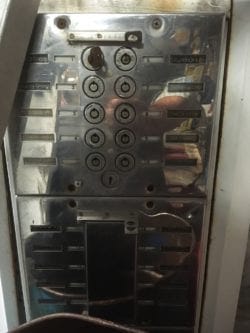How to Start a Fintech: The Birth of Fuel Cards | Supplemental 1
In the 11,940th year Cash begat Keys. In its 45th year, Keys begat Cards. Thus there one generation and a world war between the birth of keys and the birth of cards.
Trucking (at some point) moves the 72% of the goods in America, and it consumes a lot of fuel doing so — 35.8 billion gallons or 85% of all U.S. diesel in 2020. That diesel makes up 39% of operating costs, so naturally operators want to keep a close eye on fuel related expenses. Fleet cards were co-developed by financial institutions and trucking companies have over the last half-century to improve tracking and expand the reach of their fleets.
A Fleet Card is like a credit card but limited to fuel, maintenance, and certain types of convenience stores (tracked via Merchant Category Code). The cards let companies “track and manage spending, help reduce overall fueling costs, and assist in the management of [a] fleet”.
The fleet card was preceded first by cash per-diem carried by a driver and then by fuel keys (also called Key Locks) like the one below. StarOil Co. has a good explanation of the process:

A vendor of fuel would set up a commercial fuel island or stand alone tank for diesel. Multiple commercial fleets would use the site reducing the overall cost of fuel and improving convenience.
Fuel inventory and billing was managed with the Key Lock system. Each fleet using a site was issued their own key. That key would turn on the pump, but would run the gallon transactions through a distinct totalizer. At the end of a week or month the company selling the diesel would take down the totalizer number and bill each individual firm for their share of fuel.
The problem with keys is that they could only be used on certain pumps and at certain stations where there was a pre-established relationship. Fuel cards solved this by allowing truckers to use any gas station, thus expanding the scope of their potential routes. But by solving one problem, another was created.
Early fuel cards were nothing more than a name and company logo, and even later ones with numbers couldn’t be verified until well after the fuel had been sold. The clerk would take down a list of card details on a slip and mail it to the issuing institution. The list was checked by the issuer and paid based on transactions made by valid cards.
This combined with processing fees, meant transactions were expensive for stations to process — least of all when adding in interchange as high as 8% — leaving the door open to a clever business. One which could solve a niche, very tangible issue — instant fleet card verification — for customers — gas stations — who have been offering the same service for over 60 years (and now over 120).
George W. Thorpe and National Data Corporation were not the first to do it, but the certainly made the biggest splash thanks to Thorpe’s inside connections with the men at Exxon and Mobil.


